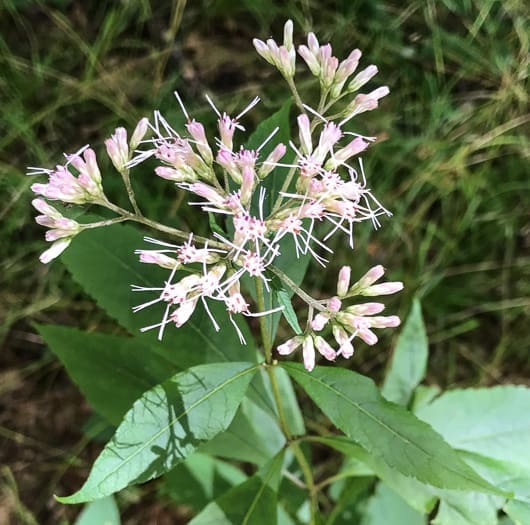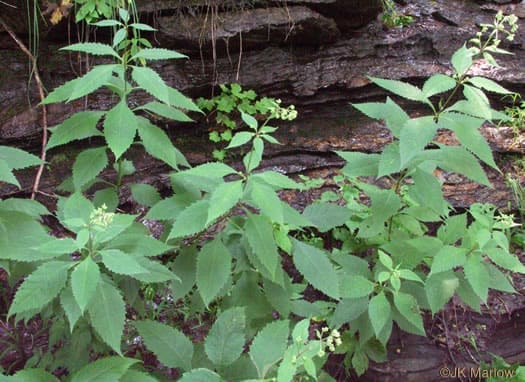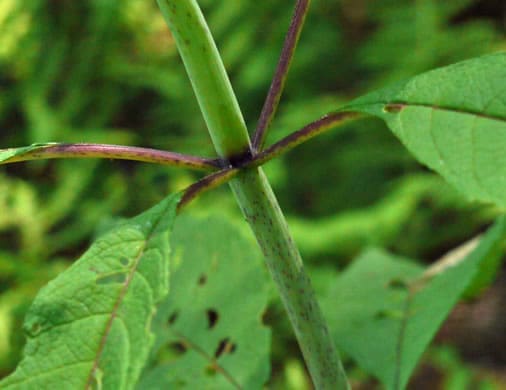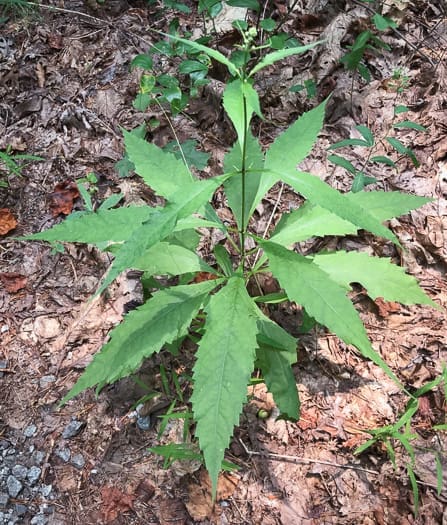Asteraceae
purple-node joe-pye
Eutrochium purpureum
Synonyms
Eupatoriadelphus purpureus
Eutrochium purpureum
Eupatorium trifoliatum
Plant Type
Herbaceous Wildflower
Life Cycle
Perennial
Typical Size
5-7 ft. tall
2-4 ft. wide
Tolerant of
Occasional Flooding
Inolerant of
Dry Soil
Propagation
By seed, By cutting, By division
Plant Propagation Notes
A small percentage of total seed produced on a flower head is viable. Seed requires 90 days cold moist stratification. Division should be done in spring when first emerging or in the fall just before dormancy.
Plant Planting Notes
Provide up to 4 ft spacing. Grows quite tall and may need staking.
Plants/Diseases
Leaves may be affected by powdery mildew and rust. Leaves may scorch if soils becomes too dry.
Wildlife Benefits
Nectar/pollen source for pollinating insects, Fruit/seeds for birds
Leaves
Leaves whorled, lanceolate to ovate with crenate or serrate margins.
Flowers
Tiny heads of pink/lavender flowers arranged in a corymb.
Fruit
Achene
Bark
Leaf nodes are purple.
Toxicity
No known toxicity.
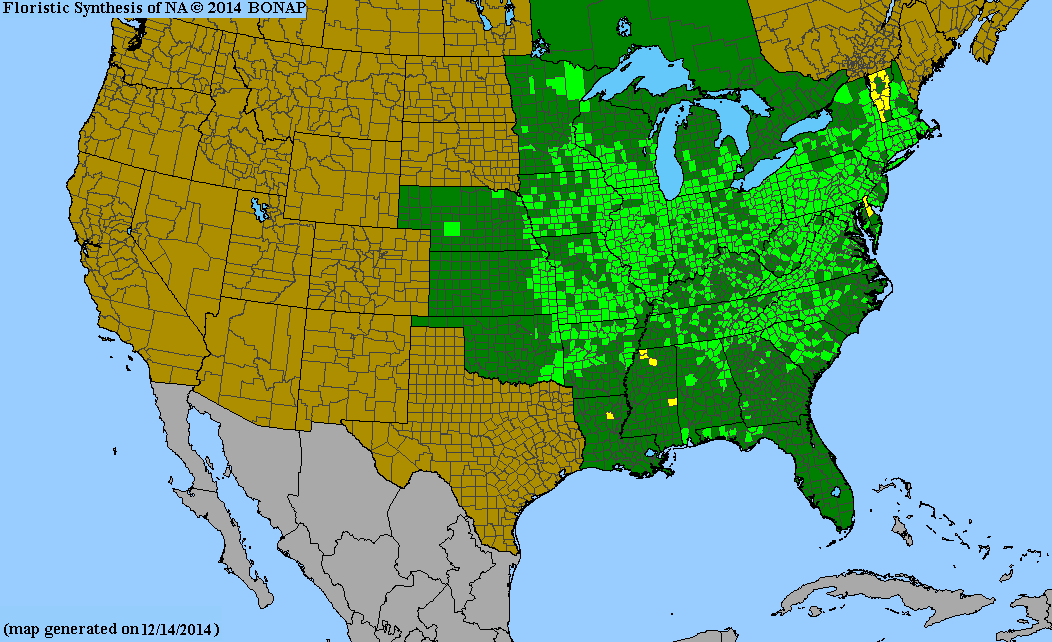
USDA Hardiness Zones
4, 5, 6, 7, 8, 9
Light Exposure
Full Sun, Part Sun/Shade
Soil Moisture
Moist
Soil Drainage
Well-drained
Soil pH
Acidic (less than 6.0), Neutral (6.0-8.0), Basic (greater than 8.0)
Native in South Carolina?
Yes
Plant Native Habitat
Mesic forests.
Global Conservation Status (NatureServe)
Secure (G5)
Federal Conservation Status (USFWS)
Not Listed
Distribution Notes
Uncommon in the South Carolina coastal plain and sandhills. Common in the piedmont and mountains.
Subspecies
Eutrochium purpureum var. carolinianum
Eutrochium purpureum var. holzingeri
Eutrochium purpureum var. purpureum

